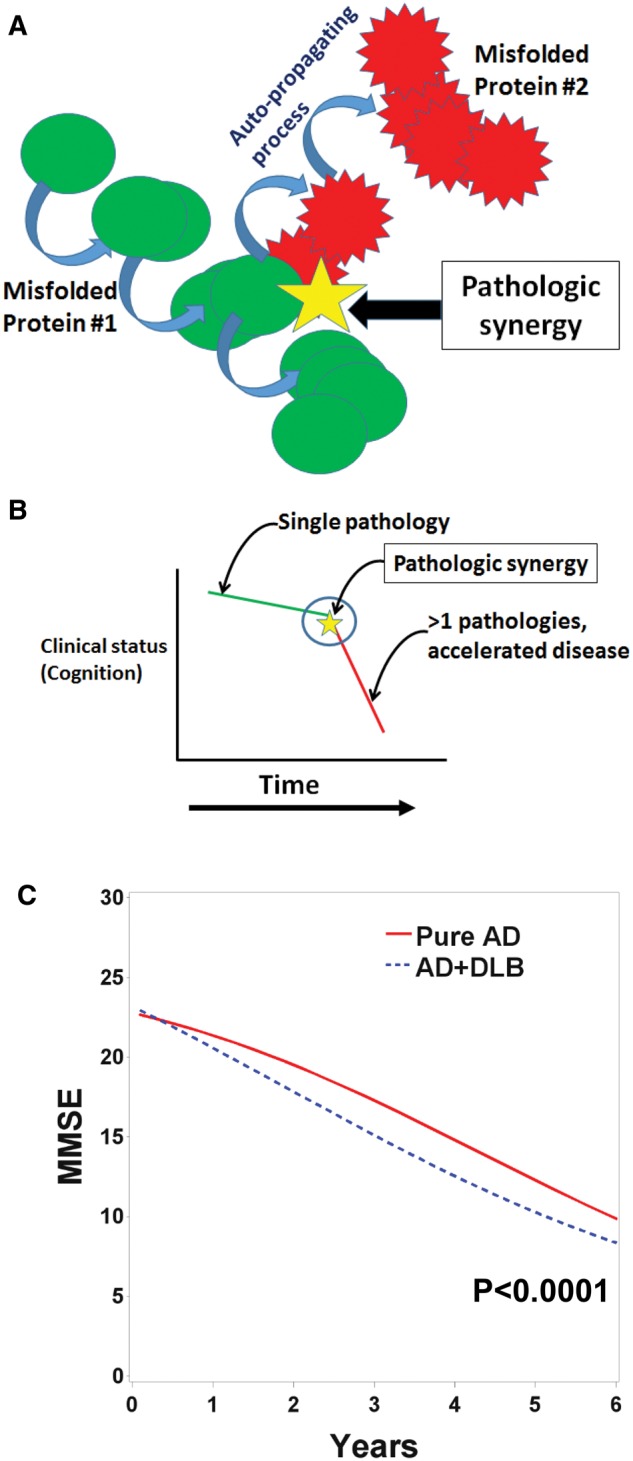FIGURE 1.

A combination of schematic illustration (A, B) and previously published data (C) help describe how pathologic synergies are associated with worsened clinical outcomes in neurodegenerative disease brains. (A) Cartoon depicts how one pathologic protein may interact with and promote the pathologic aggregation of another protein via mechanisms that are still not well understood; this is the process we are terming “pathologic synergy.” (B) The significance of pathologic synergies is that 1 misfolded protein can induce a conformational change in a separate protein species that may lead to altered (worsened) clinical course of the brain disease. (C) Data from the UK-ADC autopsy cohort provides support of this concept. The change of Mini-Mental State Exam (MMSE) scores over time, prior to death, is depicted using a statistical model of data from age-matched patients who died with Pure Alzheimer disease (AD) (n = 45) or AD with comorbid Lewy body disease, (AD + DLB, n = 20) pathologies, after having been followed longitudinally at the UK-ADC for >4 years before death. Note that the trajectory of cognitive impairment is more severe for AD + DLB patients (all with amygdala LBs) than Pure AD patients. The p value is derived from the “midpoint” parameter of the logistic model. Curves were generated using a 3-parameter logistic regression model (243) to allow between-cohort comparisons, as described in previously in detail (36).
